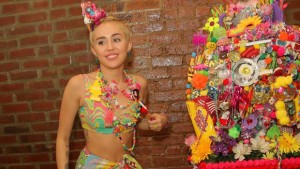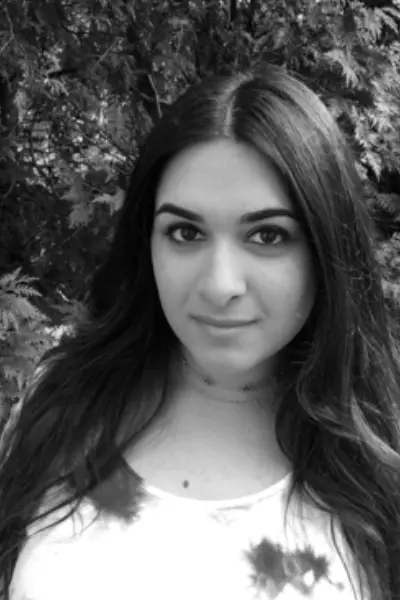The Rave Reality
While the perceptions of drug use are largely true, most other “widely known” truths are far from accurate.
By Michelle Nektalov, SUNY Purchase
I went to my first rave when I was 16-years old.
“Excited” doesn’t even begin to describe the energy I felt while waiting outside of the club. The heavy bass of electronic music leaked out into the city streets as the club doors opened and closed. The rhythm teased my ears.
When I finally made my way into the building, a wave of admiration came over me as I experienced rave culture for the first time. Since then, I’ve only grown more passionate about the culture and EDM music at large.
Compared to other genres, EDM is saturated in assumptions and misconceptions. Over the years I’ve heard stigma after stigma about the music, the dancing, the wardrobes and the drug use, to the point where rave culture seems almost more myth than reality.
As a fan of the music, it’s important that EDM be at least accurately represented. Whether outsiders want to disparage or question is there choice, but misinformation never encourages understanding. As a result, here’s a list of which rave culture myths are true and which are false.
Rave Rumor #1: Electronic Dance Music = Big Room House Music (False)
People often assume that you’re talking about house music when you say you listen to EDM. This misconception is mostly the result of collaborations between popular mainstream artists and house DJs, such as Avicii, Hardwell, Calvin Harris and Zedd. As a result of their working together with famous pop and hip-hop performers, house music’s most notorious DJs have become radio hits and catapulted their sound into the mainstream.
In reality though, big room house is only a subgenre of EDM, a branch in a musical tree filled with other genres like trance, hardstyle, drum and bass, techno, trap, moombahton and many more. As dance music becomes more mainstream though, EDM genres outside of big room house will likely garner increased recognition.
Rave Rumor #2: The Rave Scene Is For Kids (False)
Regardless of how many young, attractive chicks you see in the aftermovies, rave culture is not exclusively for young people. It might be difficult to imagine an adult in such a rowdy scene, but when you see someone older at a show, chances are they’ve been raving since before you were born.
Underground dance parties boomed in the U.S during the 90s, so that old couple swaying back and forth were probably raving when dances were still shut down if the police found them. If anything, I find comfort in knowing that their passion for rave culture has persisted all these years, instead of fading away as a phase.
Rave Rumor #3: The “Kandi Kid Look” is “The Look” (Sort of True)
The kandi kid wardrobe includes brightly colored tutus, leg wraps, fluffy hats, body chains, light up pacifiers, bandanas and a popular form of beaded jewelry that ravers exchange called kandi.
In America, this fiercely neon style of peacocking is the predominate style of rave culture.
However, other countries prefer less dramatic looks, more similar to what a festival-goer would wear to Governor’s Ball or Lollapalooza. One look in particular, the pseudo-gothic techno head, totally flies in the face of the American predilection for all rainbow everything
Rave Rumor #4: Ravers Fist Bump The Whole Time (False)
Ravers are passionate about dancing, and anyone who is passionate about dancing thinks that fist-bumping is an irrelevant bore, especially given all the other options. A personal favorite of mine is shuffling, a type of dance that originated in the 80’s Australian rave scene.
Since its inception, the predecessor to the now-popular “Running Man” dance has grown into a huge sensation, both at shows and on the internet, where shufflers advertise their skills on social networking sites. Gloving and hooping, two other popular ways to get lost in the music, both include manipulating lights with swift movements to create colorful, eye grabbing lightshows.
Rave Rumor #5: Pop A Molly… (True)
And start sweating? Yeah, that happens. Sadly the use of MDMA, or Molly as it’s more colloquially known, is common at raves and festivals. Drugs and rave parties have a lot of history together, starting when marijuana and acid conquered the dancefloor.
Weed and sugar cubes aside though, it was the introduction of ecstasy that really paved the way for Molly into the rave scene. Although the EDM environment may be saturated with drug use, many people (such as your author), attend concerts sober and still have a crazy wonderful experience.
Rave Rumor #6: Eat. Sleep. Rave. Repeat. (True)
It’s not the only thing EDM aficionados do with their time, but going to raves definitely becomes a lifestyle. Because the culture promotes a total freedom of expression, attending events can be addicting.
The environment welcomes values of peace, love, unity and respect, known within the scene as PLUR. These principles allow a safe space within the walls (or gates) and ensure a feeling of acceptance no matter your race, gender, sexuality or economic status. With such an inclusive mindset, it’s nearly impossible for critics to deny the allure of rave culture.
For years misconceptions and regrettably true criticisms about rave culture have unfairly defined the genre. But despite the negative perceptions, rave culture has always been about disregarding the judgments of others and doing what makes you happy, which is why the genre has birthed countless, widely-appealing party anthems, and will continue to do so into the future.











This was a great article to read, I do agree that the concept of EDM in itself has been given a tainted image of illegal drug use from the media. Even though illegal drug use is present in music festivals, it is not the core of the event.
Music is a great platform for social connections where individuals can bond with one another on their shared interests and passions. With the plethora of negative public image, it’s difficult to differentiate dance music to as a specified music genre for people to get high off whatever form of drug it may be. We cannot change the fact that drug use is present, but that does not mean that there isn’t hope in changing the attitudes of the general community on the benefits EDM has on individual lives.
My page also supports and promotes the key arguments of this argument. It’ll be great to hear from you again.
https://www.facebook.com/addressthepress/